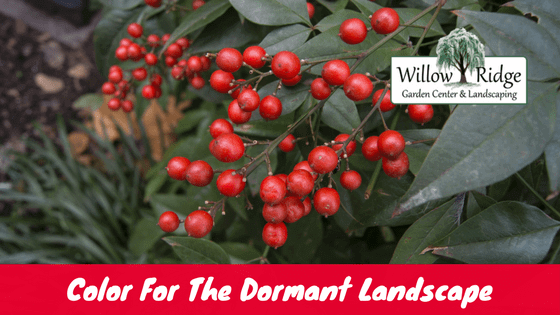Color for the Dormant Landscape
The growing season is full of beautiful flowering plants in any garden. But the dormant season is rather bleak with several months of gray skies and bare limbs. The winter garden can come alive with subtle colors by combining needled and broadleaf evergreens, plants with textured or brightly colored bark, and those with berries or seedpods. Color for the dormant landscape can be added in many ways!
Texture & Color
In winter, we can’t stress enough the value of evergreens to screen views, define borders, or adorn the entrance of your home. In East Tennessee, we love our hollies, dwarf Nandinas and dwarf conifers. The Chinese hollies sport broad, glossy leaves, and have red berries in the Winter. What an iconic holiday plant! The Japanese hollies are tight little mounds of tiny green leaves that contrast well with needlelike foliage of spruce and cryptomeria (conifers). Conifers come is many colors from gold toned, blue, or emerald green. Their color really pops when all the leaves begin to fall. Nandina foliage comes alive with the cold season, taking on a delicious candy apple red color. She pairs well with all types of landscape plants.
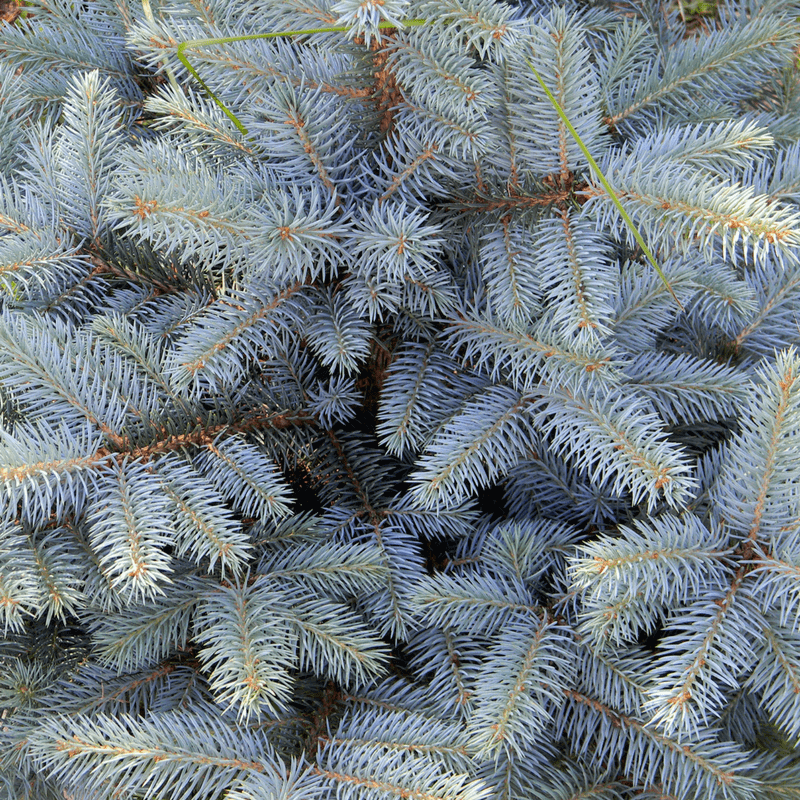
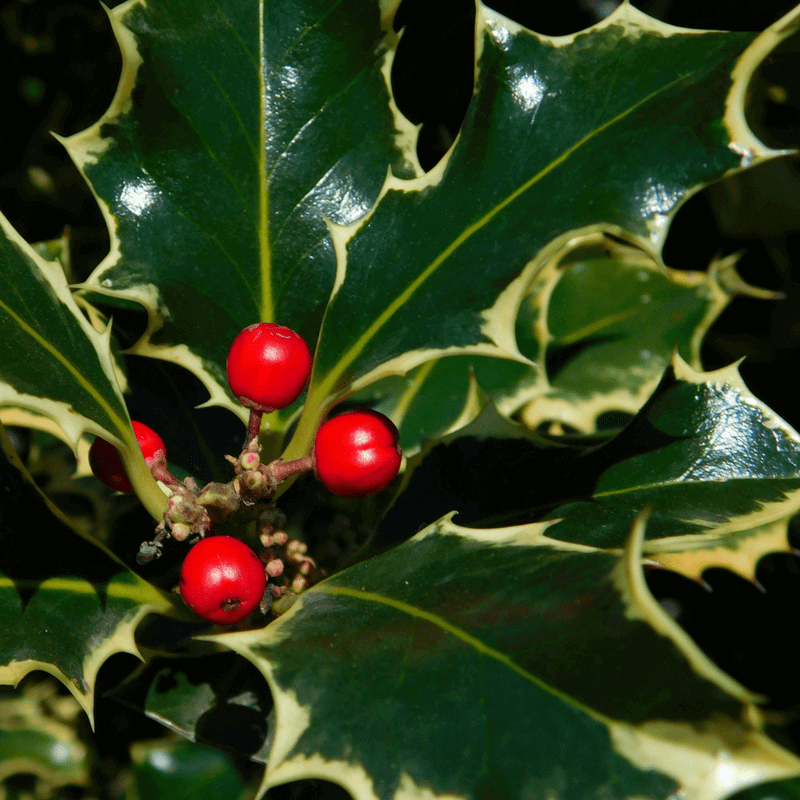
Bark & Berries
Don’t discount the importance that tree and shrub bark plays in the dormant garden. You are all familiar with the peeling bark of birch trees. Their color and texture make a landscape more interesting. Shrubs like red or yellow twigged dogwood add obvious color with their winter bark. The rough bark on Oakleaf hydrangea or the curly twigs from contorted Filbert are both exceptional in the winter. Berries on Nandina, winter berry hollies, pyracantha, mountain ash, and hawthorns will add a pop of color too. Birds often raid them in early winter though. At least you’ll have the pleasure of watching them, which also makes the winter garden more interesting.
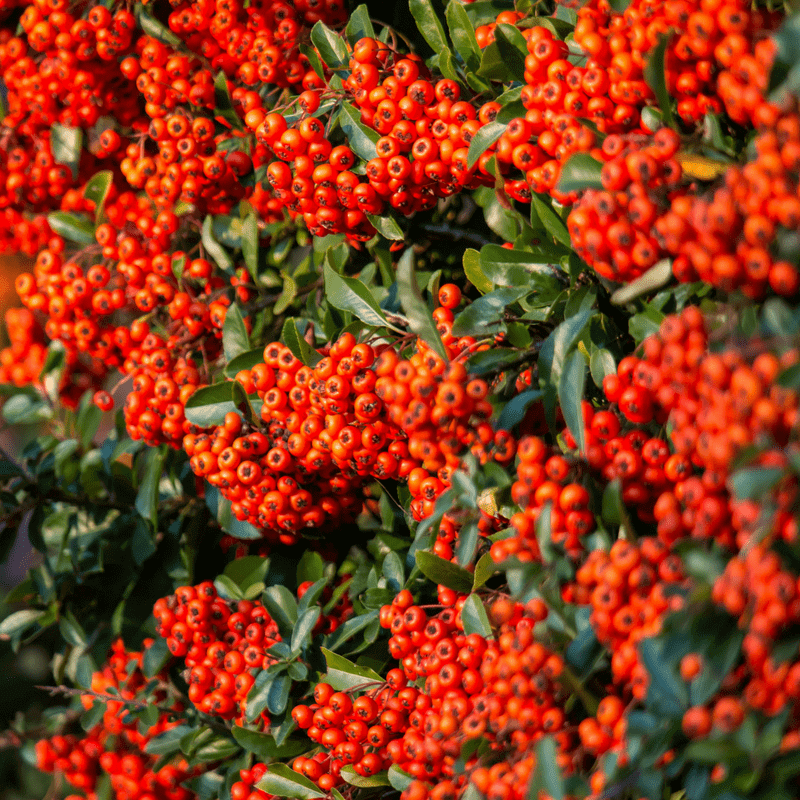
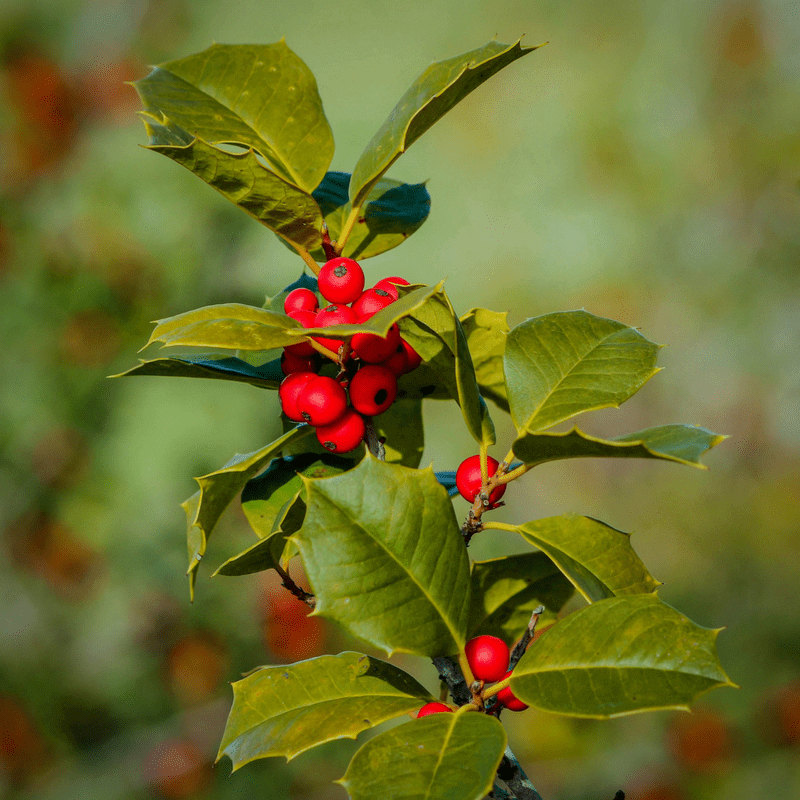
The dormant season can still be colorful. It takes a little planning and the best time to see the gaps in your landscape is when fall is over. Go out and really look at the garden and decide where you need a winter boost of color, and get planting. Take pictures and visit your local garden center for advice. Make this and every winter thereafter a more colorful one as you enjoy your new four season’s garden.

